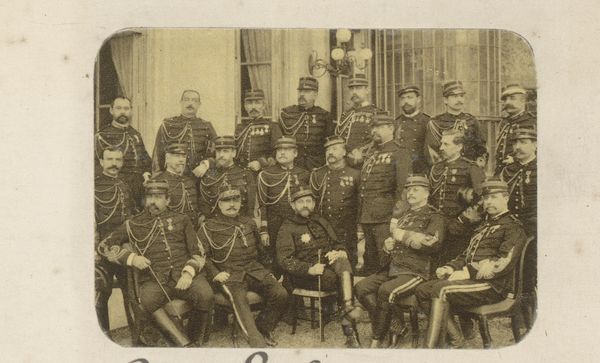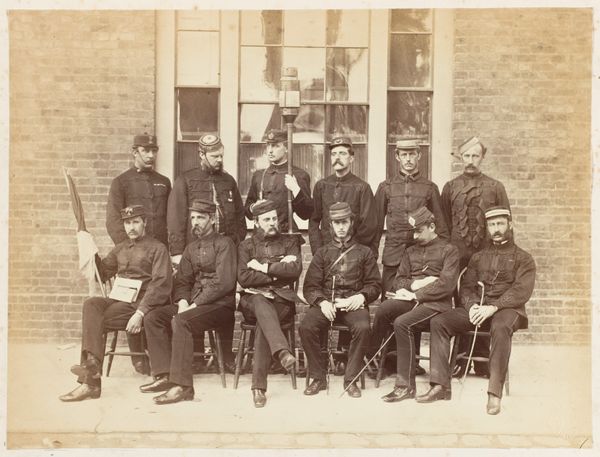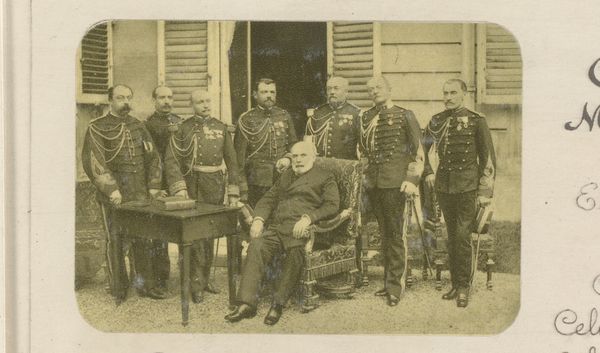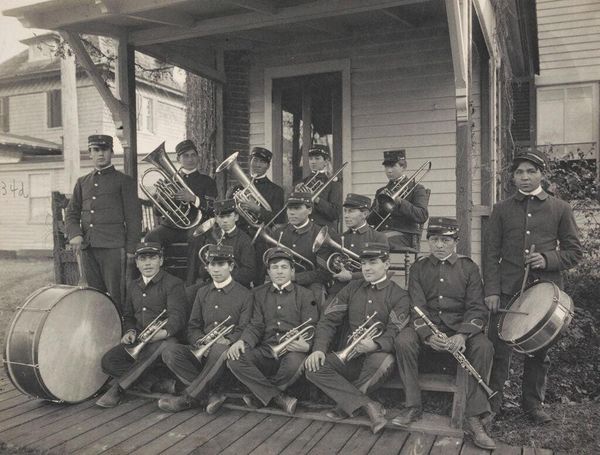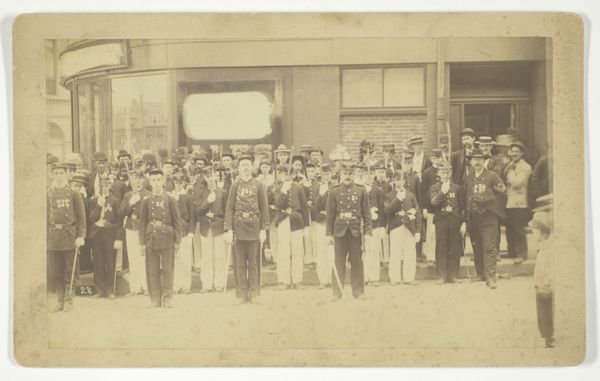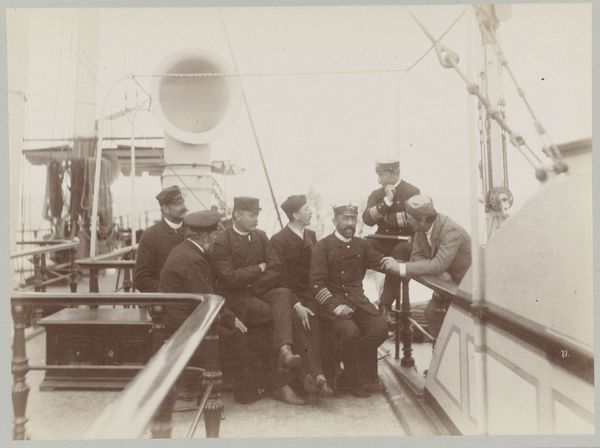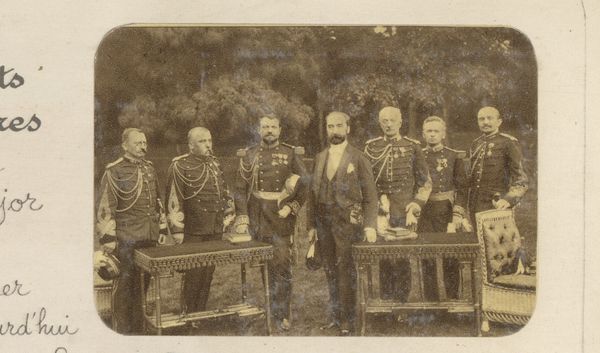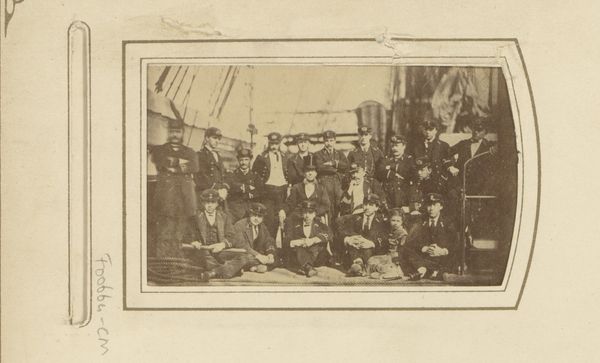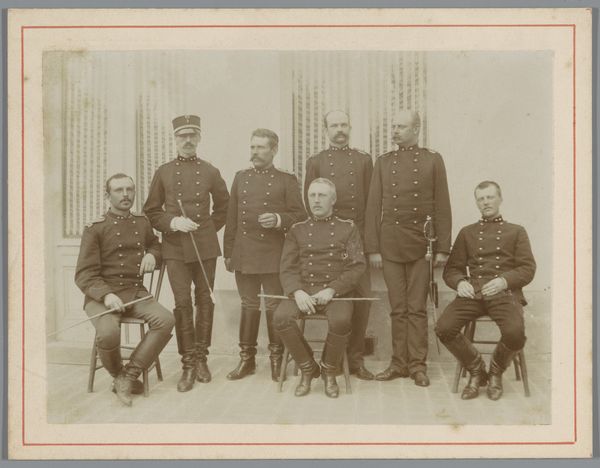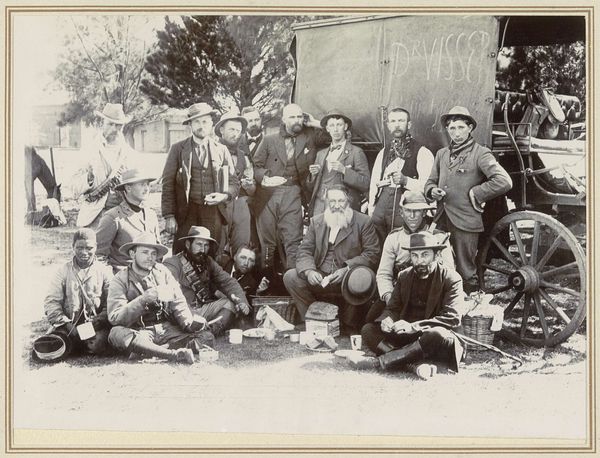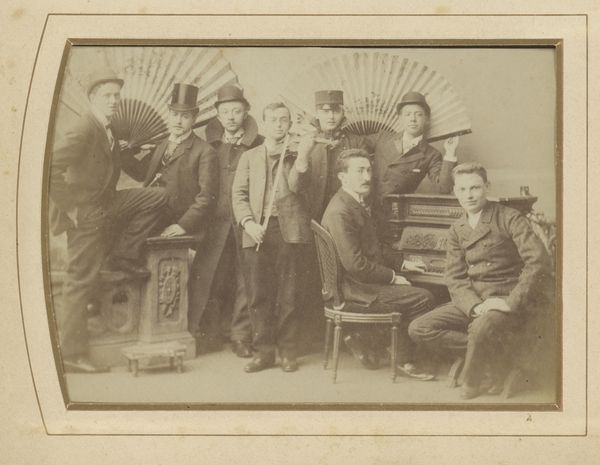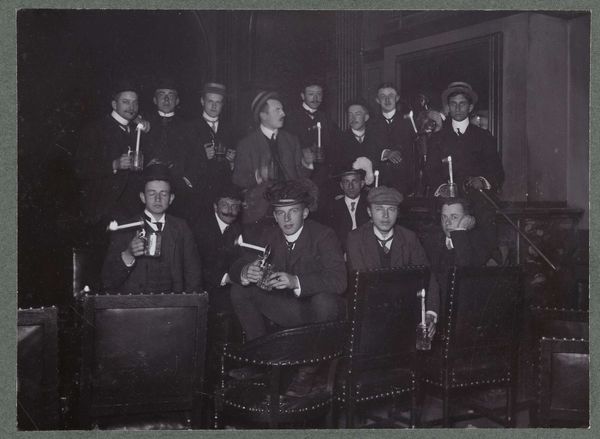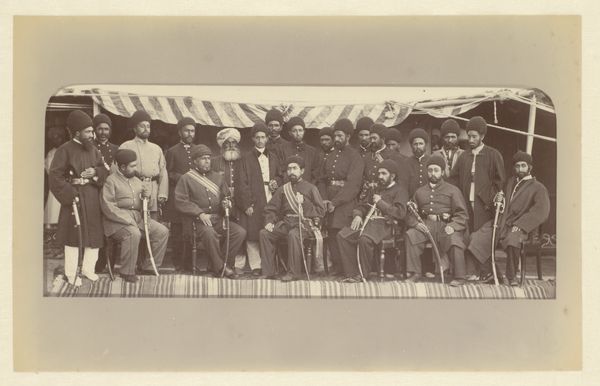
Groepsportret van onbekende Nederlandse mariniers in uniform op het dek van de H.M. Neptunus 1904
0:00
0:00
anonymous
Rijksmuseum
photography, gelatin-silver-print
#
portrait
#
photography
#
historical photography
#
group-portraits
#
gelatin-silver-print
#
genre-painting
#
realism
Dimensions: height 82 mm, width 111 mm
Copyright: Rijks Museum: Open Domain
Editor: This gelatin-silver print, taken in 1904, is called "Groepsportret van onbekende Nederlandse mariniers in uniform op het dek van de H.M. Neptunus." It depicts a group of uniformed Dutch marines. I find the rigidity and formality striking, but also a bit unsettling. What underlying narratives do you think this image conveys? Curator: That sense of unease is valid. This image isn’t just a portrait; it’s a document of power and national identity construction at a time of intense colonialism. Think about what the "H.M. Neptunus" represents—the reach of the Dutch empire, primarily achieved through the violence and extraction from colonized lands. Consider, too, the uniformity itself; how does this standardization of dress and posture reinforce notions of discipline, order, and control within a colonial context? Editor: So, you're suggesting the photograph, even in its stillness, promotes an idea of Dutch colonial authority? Curator: Precisely. These men, standing together on the deck of a ship named after a Roman god of the sea, symbolize the Netherlands' maritime power and its global reach. Look at their faces—do you see individuality or a collective representation of the Dutch colonial project? This group portrait is a stage managed display of national prowess. Editor: It’s strange how a seemingly straightforward image can reveal so much. The rigid pose and almost expressionless faces now read completely differently. Curator: Absolutely. Images like this are vital to unpack. By engaging with their historical and social contexts, we can begin to challenge the narratives they promote and question the legacies they represent. Hopefully that encourages new readings. Editor: Definitely. Thinking about power structures and the colonial context gives me a lot to consider when viewing similar historical portraits.
Comments
No comments
Be the first to comment and join the conversation on the ultimate creative platform.
